Having your oxen die of dysentery and watching your children be wiped out by extreme frostbite in the game Oregon Trail, taught us those pioneers had it hard. Especially in the winter when they had to live off of whatever they stockpiled for the long trip from St. Louis to Oregon.
Many pioneers suffered wagon breakdowns or stumbled upon plots of land along the way, and settled where they were. Not to mention those who couldn’t make the south pass before the hard snows of winter blanketed the land.
My great-grandfather helped guide pioneer wagon trains and scout railroad routes. Many of his stories were passed down through family lore, and over the years I’ve traced them back. Standing in the places he did, and understanding what he went through. Including the winters he survived on the tools and foods he and the other pioneers stockpiled.
Grain
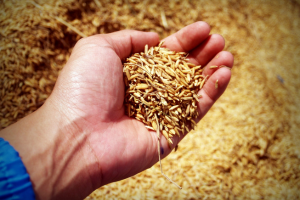
Grain was a critical component of survival for pioneers who didn’t make the south pass by winter or those who chose to settle along the way. Corn, oats, and wheat were the most common grains to stockpile.
They were versatile enough to be ground into different types of bread, fritters, and corn pone. It could also be made into a communal porridge that was kept warm by the fire most of the day.
Pioneers could come and go from camp, taking a scoop when they needed it. They could add personal ingredients to their own bowl to customize it. If someone happened to get a rabbit, prairie dog, or even a snake, the fresh meat could go into the porridge to add some protein value.
Dried & Salted Meat

Shelf-stable protein sources were a critical element of every pioneer’s stockpile.
Regardless of whether you were hunkering down to survive the winter or pushing through on the trail, a wise pioneer always had a stock of dried jerky or sometimes salt pork in their supplies.
Smoked fresh meat or fish was a prized option for pioneers attempting to tough out the winter. This was usually something they caught or killed in late fall when they were setting up their winter camp.
Then they’d smoke it to ensure it was preserved, and winter would freeze the rest to get them through. Some other tried and trusted methods that are used to this day are these ones from the Amish. Making winter camp near a plentiful river was ideal, as they could smoke the fish they caught to get them through lean times ahead.
Firearms & Ammunition
Firearms and ammunition were stockpiled in a pioneer’s supplies to serve multiple purposes. Not only did it give them the ability to hunt and protect themselves, but it also served as a form of trade currency.
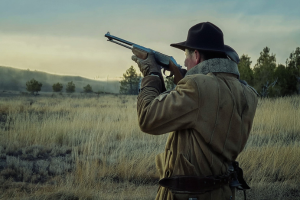 My great-grandfather made winter camp on the Missouri River within a day’s ride of a Lakota Sioux winter camp. He famously traded two rifles and a box of ammo to them for over a month’s worth of fresh buffalo meat. He then smoked and dried it to help get him and his young family through the winter.
My great-grandfather made winter camp on the Missouri River within a day’s ride of a Lakota Sioux winter camp. He famously traded two rifles and a box of ammo to them for over a month’s worth of fresh buffalo meat. He then smoked and dried it to help get him and his young family through the winter.
A wise pioneer also made sure to bring with them the means to fashion more ammunition for simple weapons. This included bringing black powder and other supplies to reload shotgun ammunition.
This gave them the ability to hunt small game in the winter. If they were desperate, being able to trade a rifle for supplies but keep and reload their trusty shotgun was also a viable option for surviving the winter.
Traps
There were several good reasons why savvy pioneers and wagon bosses included animal traps in their stockpile of supplies. This started with trapping beavers anytime they camped near a water source. While beaver pelts were declining in value, they could still fetch a fair price.
The meat was good and helped you stretch your dried meat supplies. The castoreum was valuable for trade and could be used to make perfume. Beaver and other small game animals were available during the lean winter months when big game was scarce.
Pioneers who were forced to make their winter camps near water or chose a homestead near a wetland could use traps for fresh meat. However, manmade traps of the era were prone to breaking down. So, it made sense to bring a stockpile of them, rather than fashioning traps from natural materials, which were still more unreliable.
Whiskey & Alcohol
Whiskey was the most popular type of alcohol during the pioneer days and was often included in stockpiles for several reasons. Not the least of which was as an entertaining drink.
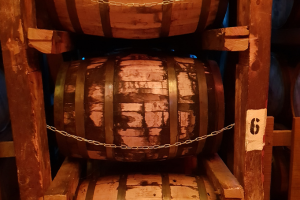
In the winter, drinking whiskey was a way to pass the time. Especially if bad weather forced homesteading pioneers to stay indoors.
It was also something you could trade for in towns and the various forts many pioneers stayed in if they were caught on the trail during the winter.
If you were in the right place at the right time, or your homestead was close to a town or fort, you could easily trade portions of your whiskey stockpile. It was a convenient way to get the meat, grain, flour, and other supplies you needed to make it through the cold months. Especially if circumstances forced you to settle somewhere between Missouri and the West Coast.
Alcohol was also something a pioneer wanted in their stockpile for medicinal reasons. It could be used as a crude disinfectant to help prevent infections in the wounds most pioneering homesteaders suffered. Many times, it was also the only form of pain medication or anesthesia available to treat pioneers with more severe wounds. They even made this cough whiskey syrup that was perfect for the cold months.
Salt, Sugar & Coffee
Pioneering homesteaders often stockpiled salt, sugar, and coffee beans to do more than just season food and percolate a caffeinated morning beverage. Each had its own value for survival and trade.
 Salt was a preservative that pioneers could use to keep meat through the warm months into the winter. Having a large stockpile of salt meant you could preserve fish caught in the summer and fall for access to protein after the ice froze. Salt was also a means to transport large amounts of meat like salt pork and beef from town to a pioneer’s homestead.
Salt was a preservative that pioneers could use to keep meat through the warm months into the winter. Having a large stockpile of salt meant you could preserve fish caught in the summer and fall for access to protein after the ice froze. Salt was also a means to transport large amounts of meat like salt pork and beef from town to a pioneer’s homestead.
Sugar had enormous trade value for pioneers to trade with each other as well as nearby forts where sweet anything was rare. Sugar also helped make a lot of homestead foods more palatable. Many people lived off the land and foraged foods that had a bitter flavor.
Coffee beans were a high-value commodity for pioneers as well as the forts and communities they traded with. This meant a pioneer with a stockpile of coffee beans could easily trade them for other essential items they needed to survive the winter. And this is not all they traded. There were a bunch of other goods they used to barter with. Check them out, you might need to do the same soon.
Tobacco
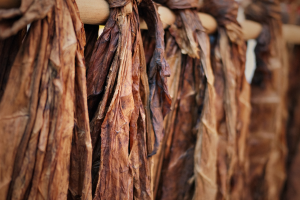 If you were a pioneer a stockpile of tobacco could help you get through the winter on its trade value alone.
If you were a pioneer a stockpile of tobacco could help you get through the winter on its trade value alone.
Especially if you were homesteading in a remote northern area of the interior where soldiers based in forts and people living in remote trading posts didn’t have access to resupplies.
During the summer tobacco’s value would drop, as wagon trains could bring in fresh supplies. Yet when winter snows closed off supply routes, tobacco’s trade value would skyrocket.
This was only amplified by tobacco’s addictive nature. In some areas tobacco also had trade value with the Native Americans. Especially for pioneers who made their homestead near a tribal winter camp location.
Beads and Trade Cloth
Glass beads and vibrantly patterned trade cloth were also common stockpile items for pioneers who intended to live in or near Native American lands. Many indigenous peoples would happily trade for these items to create their own personal decorations.
Related: 11 Things The Pioneers Carried With Them On The Oregon Trail
The Lakota Sioux in particular would trade for these beads and trade cloths. It provided the pioneers with access to resources they needed in the winter, and the tribal people could use the items to create ornamentations and their beautiful, traditional star blankets.
However, there is still some lingering controversy about this trade practice. Many pioneers set an exorbitant trading price for these beads and trade-cloth supplies that weren’t always scrupulous.
Final Thoughts
Pioneers stockpiled items to get them to their intended destination, while also considering that they might find or be forced to make a homestead somewhere along the way. This meant also being mindful of the threat of winter, and having access to enough goods to trade for unforeseeable items they might need.
This started with firearms and a stockpile of ammunition as well as the means to make more ammunition. It allowed them to hunt and protect themselves. While also serving as a viable trade commodity.
Preserved foods like salt pork, dried meat, and grains could be cooked into porridges or other belly-filling foods. Many pioneers also stockpiled salt, which they could use to preserve meat they acquired on the way. As well as sugar that could be used to make foraged foods more palatable.
You may also like:
 How To Build Self-Watering Raised Garden Beds
How To Build Self-Watering Raised Garden Beds
Why You Should Never Hide Your Stockpile in Your Basement (Video)
8 Nuclear Attack Myths You Should Stop Believing

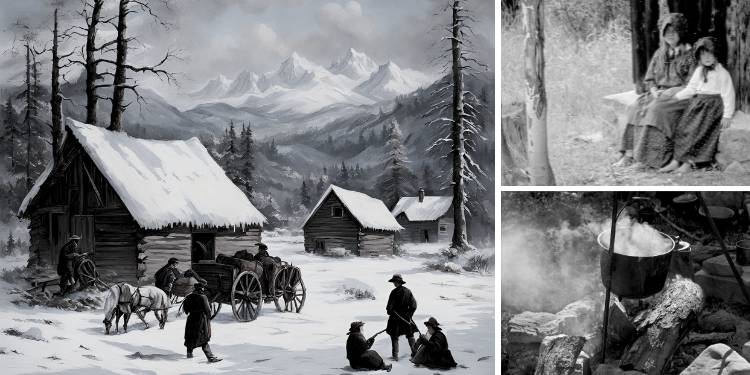




















Kool article, it would be better to know a quantity of each that they brought along for say per person or a family of 4.
Get a copy of “The Prairie Traveler”, The 1859 Handbook For Westbound Pioneers, by Randolph B Marcy. Still in print for historical reference. It is one of the prized books in my collection of early US History.
My family settled Oregon in 1948. My Great Great Grandfather left Portland for Southern Oregon when it got too big (2000 people) and had a farm. My great aunt who passed away a couple years ago had a spinning wheel her family got from the Applegate family. I love the family stories of their pioneering days.
Ya might snicker at beads and cloth but if you need some and dont have any its not so funny. Even tobacco, grow your own, it tastes different when you do because its not laden with chemicals.
Speaking of tasting different? I made my own bacon. I know a Mormon couple who does quite a bit of prepping. I did the bacon and smoked it. It tastes nothing like store bought. It came out rather like pork chop texture. I asked is this right? They said yep! It’s not injected with salts or nitrates so it is the way it’s supposed to be.
I was surprised. Anything you do yourself whether game or preserving meats tastes different. My family in Kentucky raised tobacco back in the late 1800s through the 1950s. I could sit in a room while they smoked pipes or rolled their own. When somebody is smoking now it’s nauseating. Once again, doing it natural is the way to go as much as you can. While you are preparing, remember to have your soul prepared.
If yours had no salt in it, what preparatory steps did you take prior to smoking it?
Hi, is this in paper back for sale?